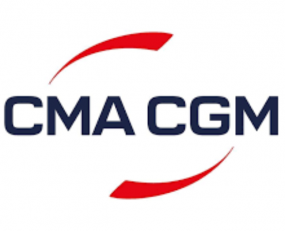
The CMA CGM Group is joining the partners of the Jupiter 1000 industrial demonstrator project, piloted by GRTgaz in Fos-sur-Mer. This installation aims to produce green hydrogen from renewable power and e-methane, a synthetic gas using this hydrogen and CO2 captured from the industrial process. Through its participation in the project, CMA CGM aims to further accelerate the pace of its fleet’s transition to new very low-carbon fuel sources.
With Jupiter 1000, GRTgaz intends to provide solutions to the challenge of decarbonising gas networks and the intermittent nature of renewable energies. The idea is to convert a portion of renewable power, at times when its abundant, into low-carbon energy(hydrogen and e-methane) so it can be store on a large scale and for lengthy periods.
Following a study phase, plus the award of administrative, then building permits, the first electrolyzer (producing hydrogen from water and renewable power) injected hydrogen into the GRTgaz gas transmission network in February 2020. A second electrolyzer, employing a different technology from the previous one, successfully entered service at the beginning of November 2021.
Beyond producing hydrogen, Jupiter 1000 also recycles CO2 by converting it into synthetic gas. The CO2produced by the boiler at Asco Industrie, a steelmaking plant located nearby, is captured at the foot of the chimney stack by equipment developed by Leroux&Lotz. The CO2is then piped to the Jupiter 1000 site. Rather than being discharged into the atmosphere, the CO2 is recycled with hydrogen in a methanation unit installed by Khimod. The syngas produced can be used instead of fossil fuel gas and employed freely across all transport and distribution networks. The hydrogen methanation facilities are due to be commissioned in June 2022.
The Jupiter 1000 demonstrator project, which is perfectly integrated with the local ecosystem, benefits from the expertise of several partners. Compagnie Nationale du Rhône generates the renewable power, RTE handles the power transmission, McPhy supplies the electrolyzers, Leroux&Lotz captures and stores the CO2, Khimod handles the methanation process, CEA-Liten is piloting the trials, GRTgaz and Teréga supply the green gas to the conventional gas network and the Port of Marseille houses the project
CMA CGM states that Jupiter 1000 is a project that has regularly attracted visits from international delegations since it was commissioned (Netherlands, Germany, Spain, Quebec, California, etc.).
The CMA CGM Group states it is committed to the energy transition and has set itself the goal of Net zero carbon emissions by 2050. In pursuit of this goal, the Group is focusing on low-carbon fuels to power its ships. By providing access to the results of its green hydrogen production, methanation and CO2 capture, Jupiter 1000 will enable CMA CGM to accelerate development of the production sector for synthetic methane, a key fuel for the decarbonization of its operations.
CMA CGM already has 28 “e-methane ready” dual-fuel, LNG-powered containerships and will have a total of 44 vessels of this type in service by the end of 2024. Liquefied Natural Gas (LNG) reduces sulfur oxide emissions by 99%, fine particle emissions by 91% and nitrogen oxide emissions by 92%, which can lead to a significant improvement in air quality. BioLNG and synthetic methane can already be used by CMA CGM ships.
Source: CMA CGM